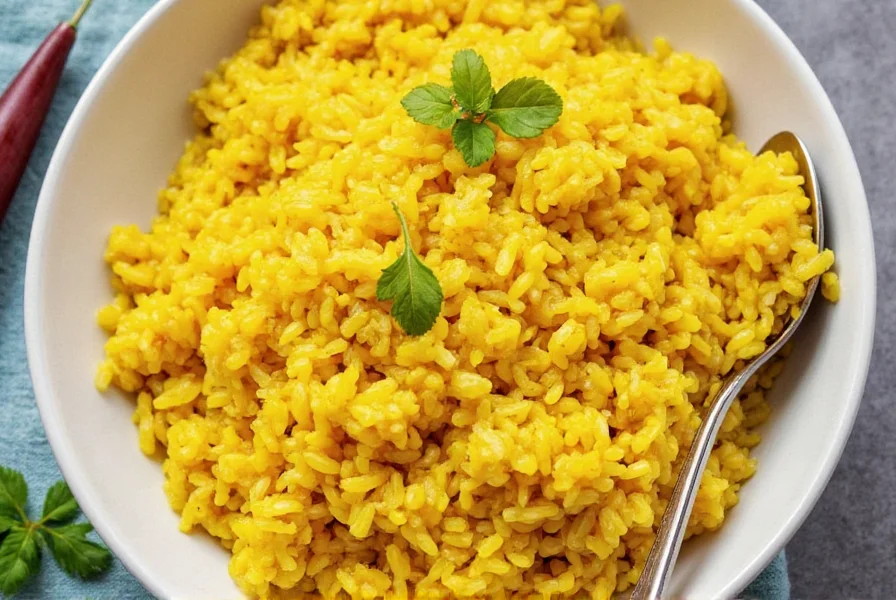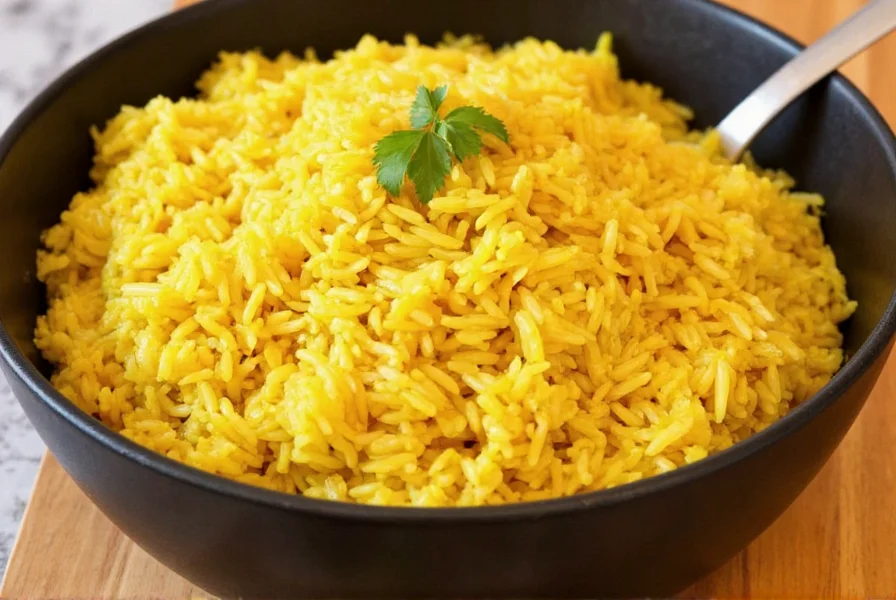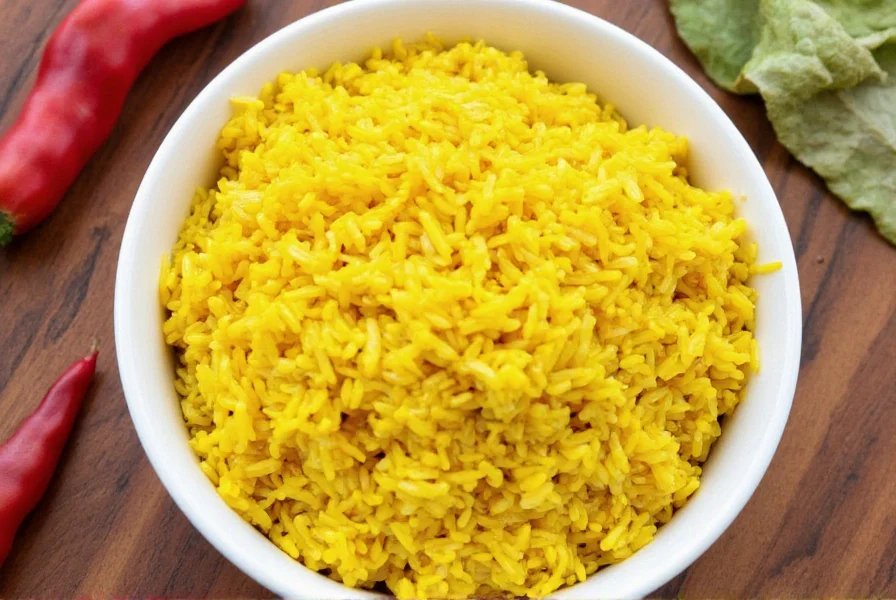Combining turmeric and rice creates more than just a visually appealing dish—it forms a nutritional synergy that has been valued in traditional cooking systems worldwide. This golden pairing appears in countless cultural cuisines, from Indian haldi chawal to Middle Eastern sholeh polo, each preparation revealing unique regional variations while maintaining the fundamental benefits of this ingredient combination.
The Cultural Significance of Turmeric Rice
Turmeric rice represents one of the most widespread culinary traditions across Asia, the Middle East, and beyond. In Indian households, turmeric-infused rice often serves as both everyday sustenance and ceremonial food. The yellow hue symbolizes purity and prosperity in many cultures, making turmeric rice a common feature at weddings and religious celebrations.
Traditional preparation methods vary significantly by region:
| Region | Traditional Name | Distinctive Preparation Method |
|---|---|---|
| India | Haldi Chawal | Basmati rice cooked with turmeric, cumin, and ghee |
| Persia | Sholeh Polo | Rice with turmeric, orange peel, and saffron for special occasions |
| Thailand | Khao Mok Gai | Turmeric rice served with marinated chicken and hard-boiled eggs |
| Caribbean | Arroz con Achiote | Rice colored with annatto and turmeric, often with coconut milk |
Nutritional Synergy: Why Turmeric and Rice Work Well Together
The combination of turmeric and rice creates a nutritional partnership greater than the sum of its parts. While rice provides complex carbohydrates and some protein, turmeric contributes powerful bioactive compounds. The key to maximizing benefits lies in understanding how these components interact.
Curcumin, turmeric's primary active compound, has notoriously low bioavailability when consumed alone. However, research shows that combining turmeric with rice prepared using healthy fats (like coconut oil or ghee) significantly enhances curcumin absorption. The starch in rice also helps stabilize curcumin during digestion, potentially extending its beneficial effects.
When preparing turmeric rice for maximum health benefits, consider these evidence-based tips:
- Add a small amount of healthy fat (½ teaspoon per cup of rice) to boost curcumin absorption by up to 2000%
- Include black pepper (just ⅛ teaspoon per cup of rice) which contains piperine to further enhance absorption
- Cook turmeric with rice rather than adding it after cooking to maximize flavor integration
- Use freshly ground turmeric root when possible for higher curcumin content
Perfecting Your Turmeric Rice: Practical Cooking Techniques
Creating perfectly cooked turmeric rice requires attention to detail. Many home cooks encounter common issues like uneven color distribution, bitter flavors, or inconsistent texture. Understanding the science behind the cooking process helps avoid these pitfalls.
For optimal results when preparing traditional turmeric rice, follow these professional techniques:
- Bloom the turmeric: Heat turmeric in oil or ghee for 30-60 seconds before adding rice to release flavor compounds and improve color distribution
- Use the right ratio: ¼ teaspoon ground turmeric per cup of uncooked rice creates vibrant color without overpowering flavor
- Control water content: Turmeric can affect water absorption; reduce liquid by 1-2 tablespoons per cup of rice
- Rest after cooking: Let turmeric rice sit covered for 10 minutes after cooking to allow flavors to fully integrate

Three Authentic Turmeric Rice Recipes to Try
Simple Everyday Turmeric Rice
This basic preparation serves as the foundation for countless variations across South Asia. The recipe yields perfectly colored, fragrant rice that pairs well with any curry or vegetable dish.
Ingredients:
- 1 cup basmati rice, rinsed
- 1¾ cups water
- ¼ teaspoon ground turmeric
- 1 tablespoon coconut oil or ghee
- ½ teaspoon cumin seeds
- Pinch of black pepper
- Salt to taste
Instructions:
- Heat oil in a medium pot over medium heat
- Add cumin seeds and turmeric, stir for 30 seconds until fragrant
- Add rinsed rice, water, black pepper, and salt
- Bring to a boil, then reduce heat to low, cover tightly
- Cook for 15-18 minutes until water is absorbed
- Remove from heat and let rest 10 minutes before fluffing
Turmeric Coconut Rice (Southeast Asian Style)
This variation incorporates coconut milk for a richer texture and flavor profile popular in Thai and Malaysian cuisine.

Golden Turmeric Rice Pilaf with Vegetables
An upgraded version featuring seasonal vegetables for added nutrition and texture.
Storage and Reheating Tips for Turmeric Rice
Proper storage maintains both the vibrant color and nutritional benefits of turmeric rice. When stored correctly, turmeric rice keeps well for 3-4 days in the refrigerator or up to 3 months frozen.
For best results when storing turmeric rice:
- Cool quickly after cooking by spreading on a baking sheet
- Store in airtight containers to prevent color transfer
- Add a splash of water when reheating to restore moisture
- Avoid metal containers which can react with turmeric and cause discoloration
Reheating turmeric rice properly preserves both flavor and nutritional value. The microwave method with a damp paper towel covering works well for single portions, while the stovetop method with a small amount of water yields better results for larger quantities.
Common Questions About Turmeric and Rice
Does turmeric change the flavor of rice significantly?
Turmeric adds a subtle earthy, slightly bitter flavor to rice that most people find pleasant and not overpowering. When used in appropriate amounts (typically ¼ teaspoon per cup of uncooked rice), it enhances rather than dominates the rice's natural flavor. The addition of complementary spices like cumin or cardamom can balance turmeric's bitterness while creating a more complex flavor profile.
Why does my turmeric rice sometimes turn out orange instead of yellow?
The color variation depends on several factors including the turmeric's quality, the rice variety, and cooking method. Older turmeric loses its vibrant color, while freshly ground turmeric root provides the brightest hue. Acidic ingredients can shift the color toward orange, while alkaline conditions create a more golden yellow. Using the proper turmeric-to-rice ratio (¼ teaspoon per cup of uncooked rice) prevents overly intense coloring.
Can I make turmeric rice without adding fat for better absorption?
While you can technically make turmeric rice without added fat, doing so significantly reduces the absorption of curcumin, turmeric's primary beneficial compound. Research shows curcumin is fat-soluble, meaning it requires dietary fat for proper absorption. Using just ½ teaspoon of healthy fat per cup of rice dramatically increases bioavailability without substantially affecting the dish's nutritional profile.
How much turmeric should I use when cooking rice for health benefits?
For noticeable health benefits without overwhelming flavor, use ¼ to ½ teaspoon of ground turmeric per cup of uncooked rice. This provides approximately 200-400mg of curcuminoids, which research suggests offers anti-inflammatory benefits. Remember to include a small amount of fat and black pepper to maximize absorption. Consuming turmeric rice regularly as part of a balanced diet yields better results than occasional large doses.
Does cooking turmeric with rice destroy its health benefits?
Cooking actually enhances certain benefits of turmeric. While some heat-sensitive compounds may degrade, the cooking process increases curcumin's solubility and bioavailability. Studies show that heating turmeric in liquid for 10-15 minutes can increase curcumin absorption by making it more soluble. The starch in rice also helps protect curcumin during digestion. For optimal benefits, cook turmeric with rice rather than adding it after cooking.











 浙公网安备
33010002000092号
浙公网安备
33010002000092号 浙B2-20120091-4
浙B2-20120091-4